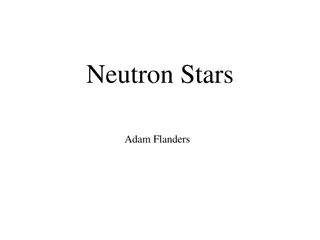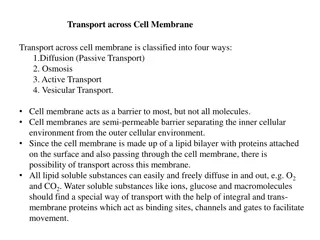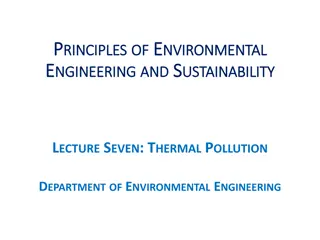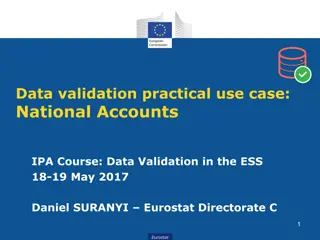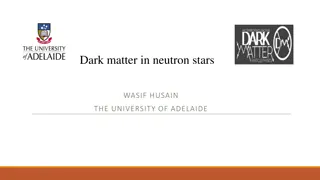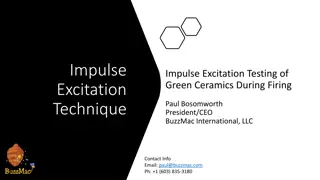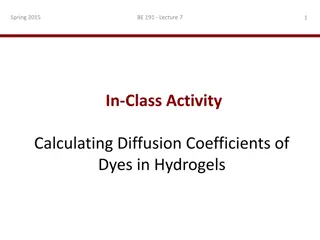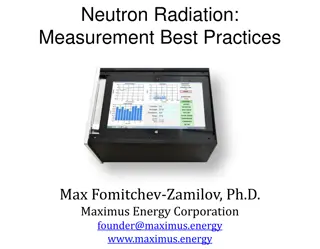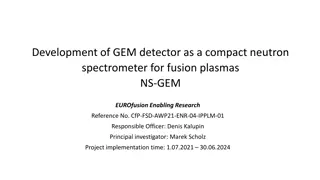Calculation and Validation of Thermal Neutron Diffusion Length in Water at Elevated Temperatures
This research focuses on the validation of thermal neutron diffusion experiments in water at elevated temperatures. Various methods, including the pulsed-neutron die-away and static relaxation length methods, were used to determine the diffusion length (L). Through linear and power fits based on data from 24 publications, a theoretical model was established for L=T(K)0.474, with comparisons to experimental data. Additionally, simulations using MC21 showed promising results when compared to pure experimental fits, demonstrating the accuracy of the calculated values.
Download Presentation

Please find below an Image/Link to download the presentation.
The content on the website is provided AS IS for your information and personal use only. It may not be sold, licensed, or shared on other websites without obtaining consent from the author. Download presentation by click this link. If you encounter any issues during the download, it is possible that the publisher has removed the file from their server.
E N D
Presentation Transcript
Validation of H-H2O at Elevated Temperatures using Diffusion Experiments Mike Zerkle Jesse Holmes Cross Section Evaluation Working Group Brookhaven National Laboratory November 4-6, 2019 The Naval Nuclear Laboratory is operated for the U.S. Department of Energy by Fluor Marine Propulsion (FMP), LLC, a wholly owned subsidiary of Fluor Corporation.
Compilation of Historical Thermal Neutron Diffusion Length (L) Measurements for Water These experimental results are a based on either the pulsed-neutron die-away (PNDA) method or the static relaxation length method. Both methods (in theory) should give the same result for L. Quoted uncertainties are approximately the widths of the markers and are not shown. 2
Linear and Power Fit Based on 24 Publications LINEAR FIT The parameter R was iteratively adjusted in TR so that the theoretical L=TR curve matched the linear best fit of experimental data plotted as L=TR. The best solution for R is 0.474. The experimental scatter greatly exceeds that which would be consistent with quoted uncertainties alone. However, fitting over data from 24 different publications likely greatly reduces any net methods bias in the fit. 3
Experimental Data Compared to Power Fit Theoretical fit for L=T(K)0.474 with curve pinned at 22 C based on the weighted mean of diffusion length measurements from 11 different publications (L = 2.770 cm). 4
Calculating L with MC21 PNDA Simulations PNDA flux decay: ? ?,? = ?0 (?)? ??; fundamental eigenvalue computed with MC21 simulations 6) ?0+ ?0? + ??2 for ? = ?? 2 ??? 4+ ?(?? 2 ? = ? ?+ ???? ?0 2?0 1 +4?0? ?0 ?0+ ? ?0 ? ? 1 + 2 ?0 ? 2. Geometric buckling for spheres: ?? 2= ?+? ? is approximately proportional to ?tr and is computed at 22 C by Sjostrand (1977) for water spheres (with corrections for small geometries). ? ?. ?tr is approximately proportional to ?, and ? The ratio of L at an arbitrary temperature to L at 22 C can be computed from the previously given fit. The expected ?, ?tr, and ? for any temperature can now be computed (accounting for density change), allowing ?? 2 to be determined for water spheres of arbitrary radii and temperature. Finally, calculated ? can be plotted vs. ?? L can be computed by solving for the coefficients ??, ??, and ? with a quadratic fit. ? for many water spheres of varying radii, and then 5
500 K MC21 Calculation Compared to Prediction by Pure Experimental Fit Difference between MC21 result and pure experimental fit result for 500 K is 0.5%. The uncertainty in MC21-calculated L due to ENDF uncertainty in a(1H) is 0.9%. 6
Room Temperature and 500 K Results for Several H-H2O TSL Evaluations T (C) TSL evaluation L (cm) % diff. from exper. 22 22 22 22 22 EXPERIMENTAL FIT ENDF/B-VII.1 ENDF/B-VIII.0 NCSU FREE GAS 2.770 2.714 2.738 2.735 3.532 -2.0 -1.2 -1.3 27.5 227 227 227 227 EXPERIMENTAL FIT ENDF/B-VII.1 ENDF/B-VIII.0 NCSU 4.267 4.232 4.287 4.283 -0.8 0.5 0.4 T^0.474 7



